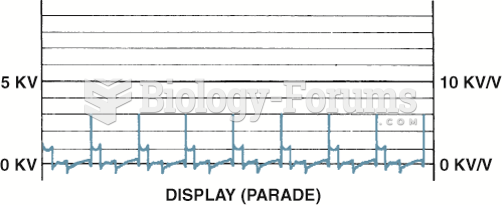|
|
|
Adolescents often feel clumsy during puberty because during this time of development, their hands and feet grow faster than their arms and legs do. The body is therefore out of proportion. One out of five adolescents actually experiences growing pains during this period.
Addicts to opiates often avoid treatment because they are afraid of withdrawal. Though unpleasant, with proper management, withdrawal is rarely fatal and passes relatively quickly.
The Babylonians wrote numbers in a system that used 60 as the base value rather than the number 10. They did not have a symbol for "zero."
Barbituric acid, the base material of barbiturates, was first synthesized in 1863 by Adolph von Bayer. His company later went on to synthesize aspirin for the first time, and Bayer aspirin is still a popular brand today.
According to the National Institute of Environmental Health Sciences, lung disease is the third leading killer in the United States, responsible for one in seven deaths. It is the leading cause of death among infants under the age of one year.
 Chrysler Hemi V-8 that has two spark plugs per cylinder. The coil on top of one spark fires that ...
Chrysler Hemi V-8 that has two spark plugs per cylinder. The coil on top of one spark fires that ...
 Display is the only position to view the firing lines of all cylinders. Cylinder 1 is displayed on ...
Display is the only position to view the firing lines of all cylinders. Cylinder 1 is displayed on ...





